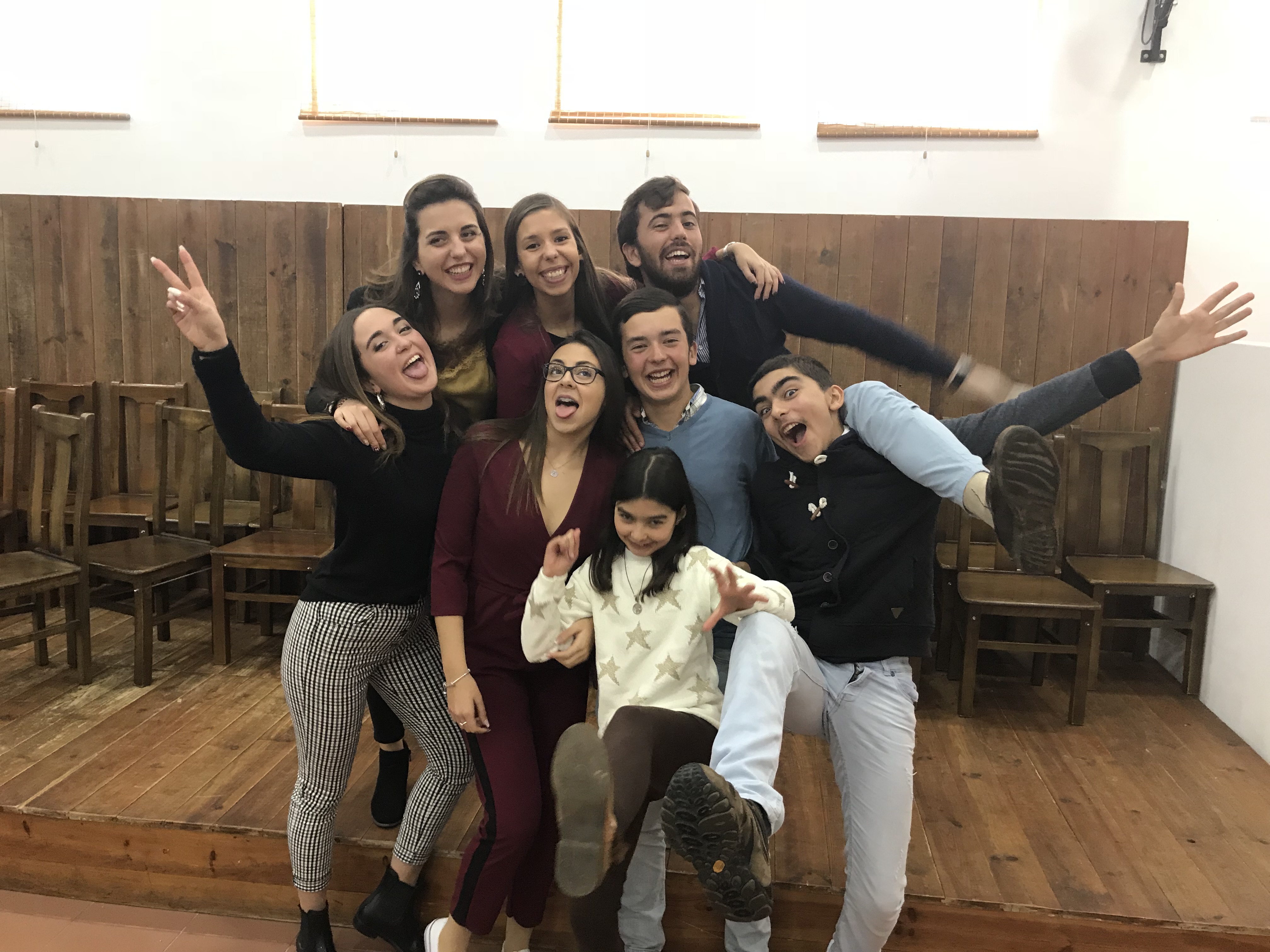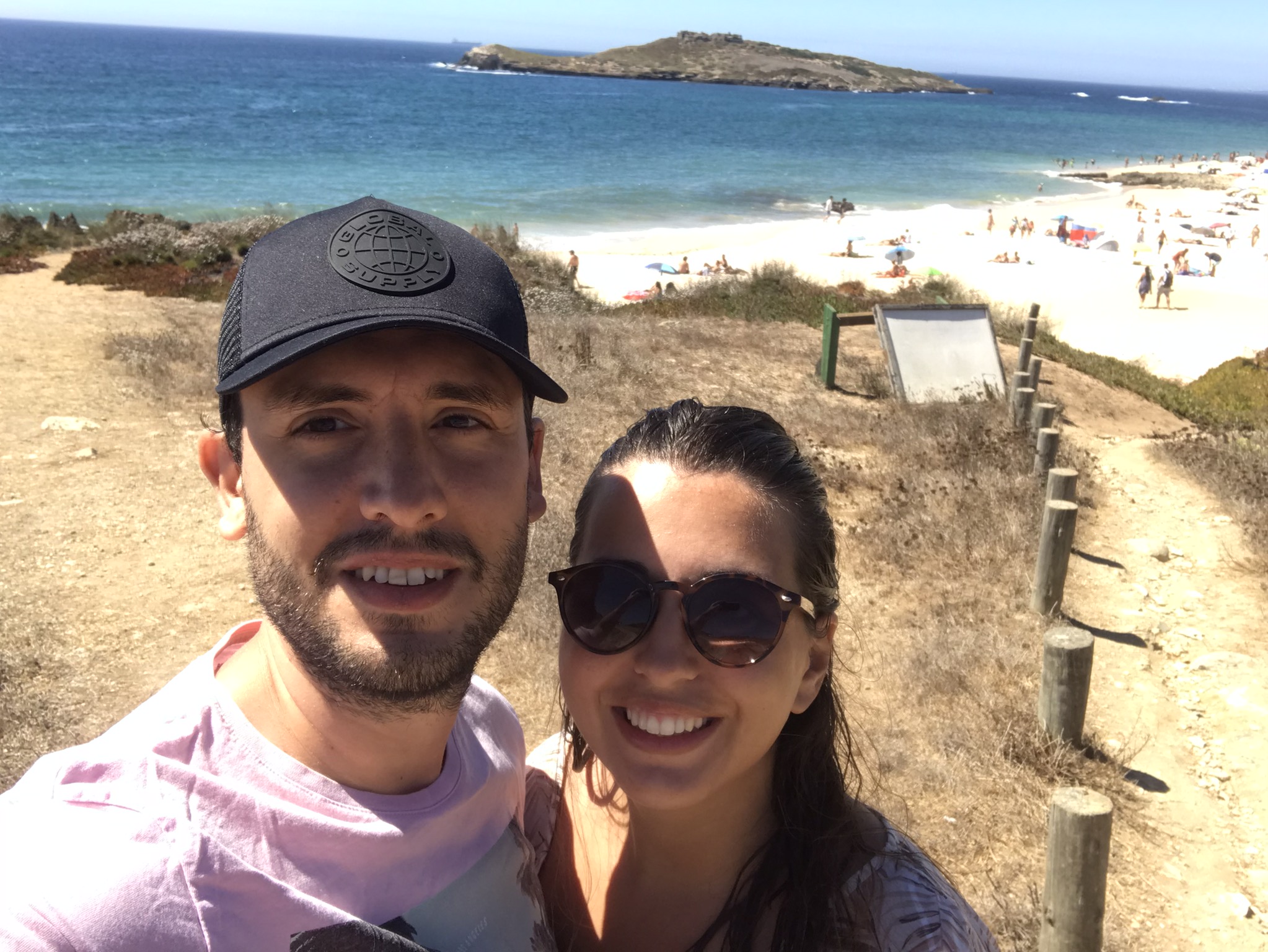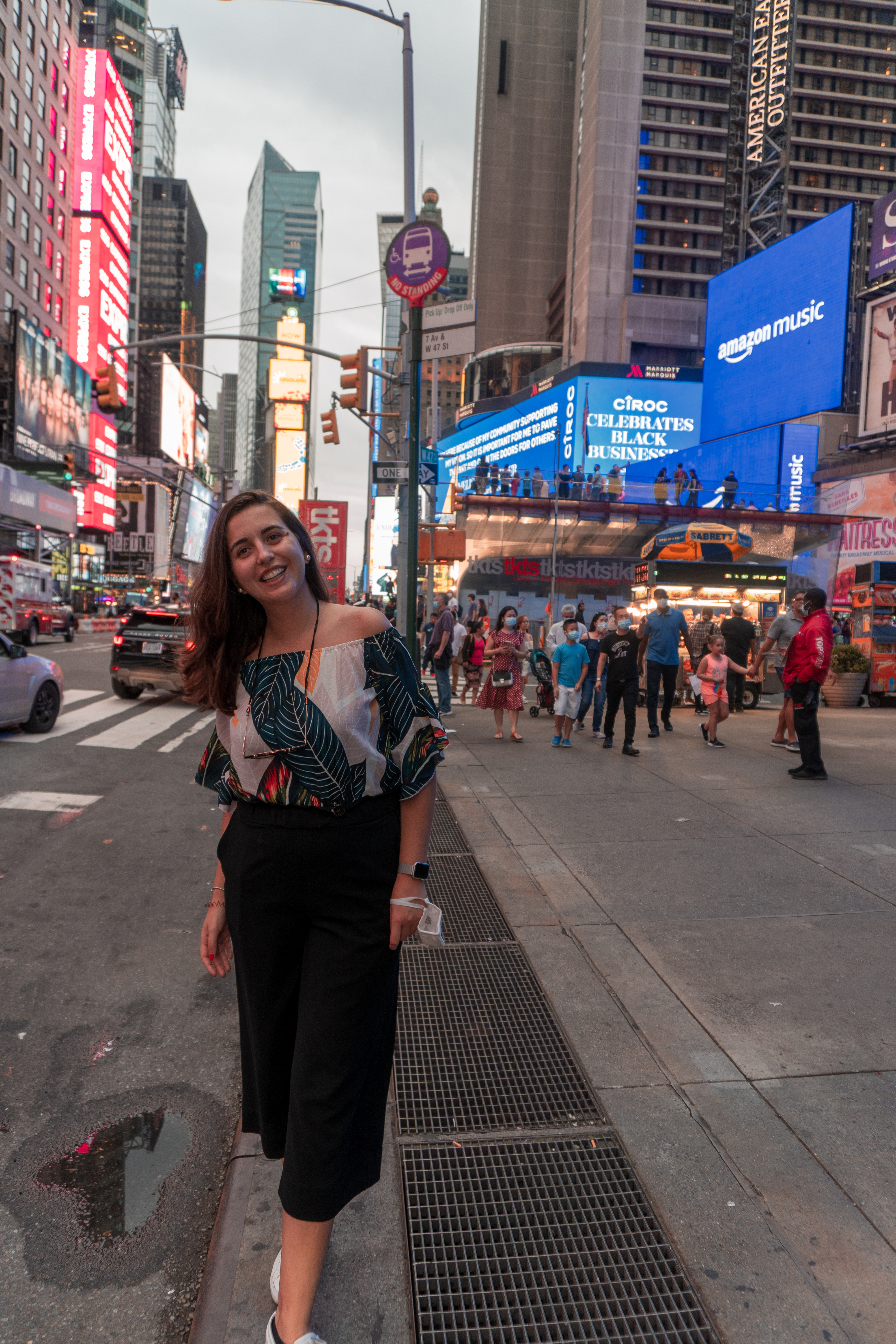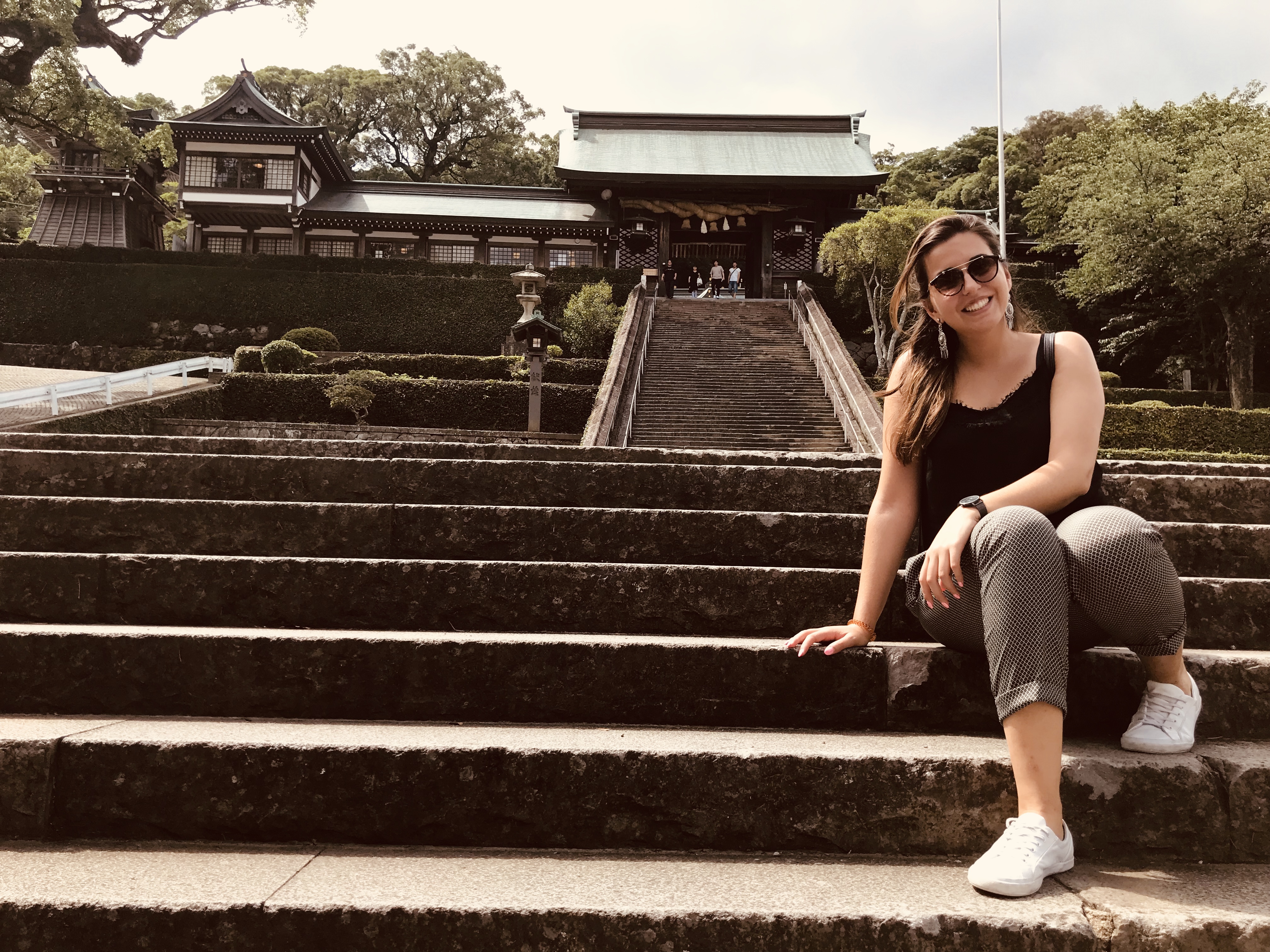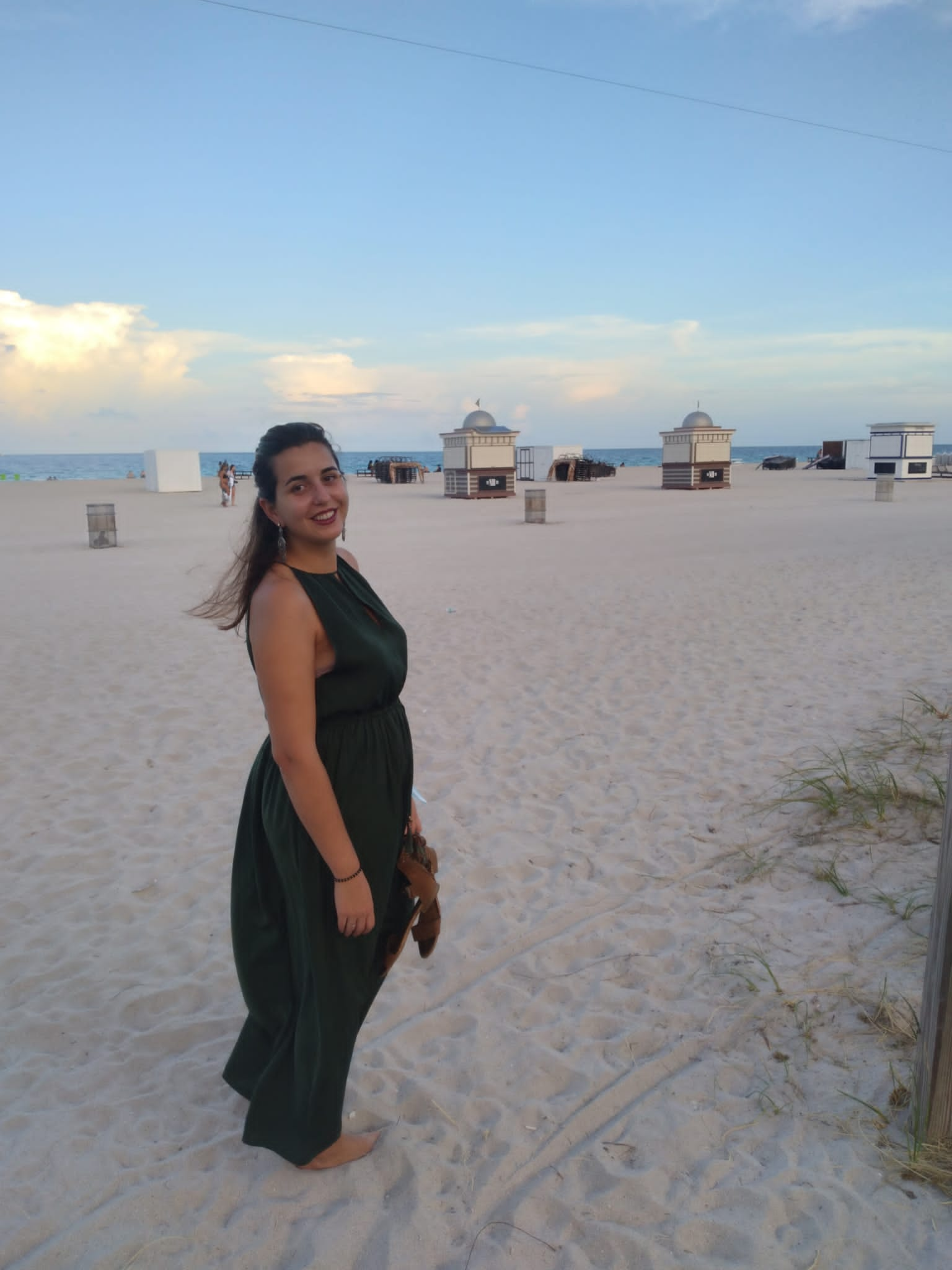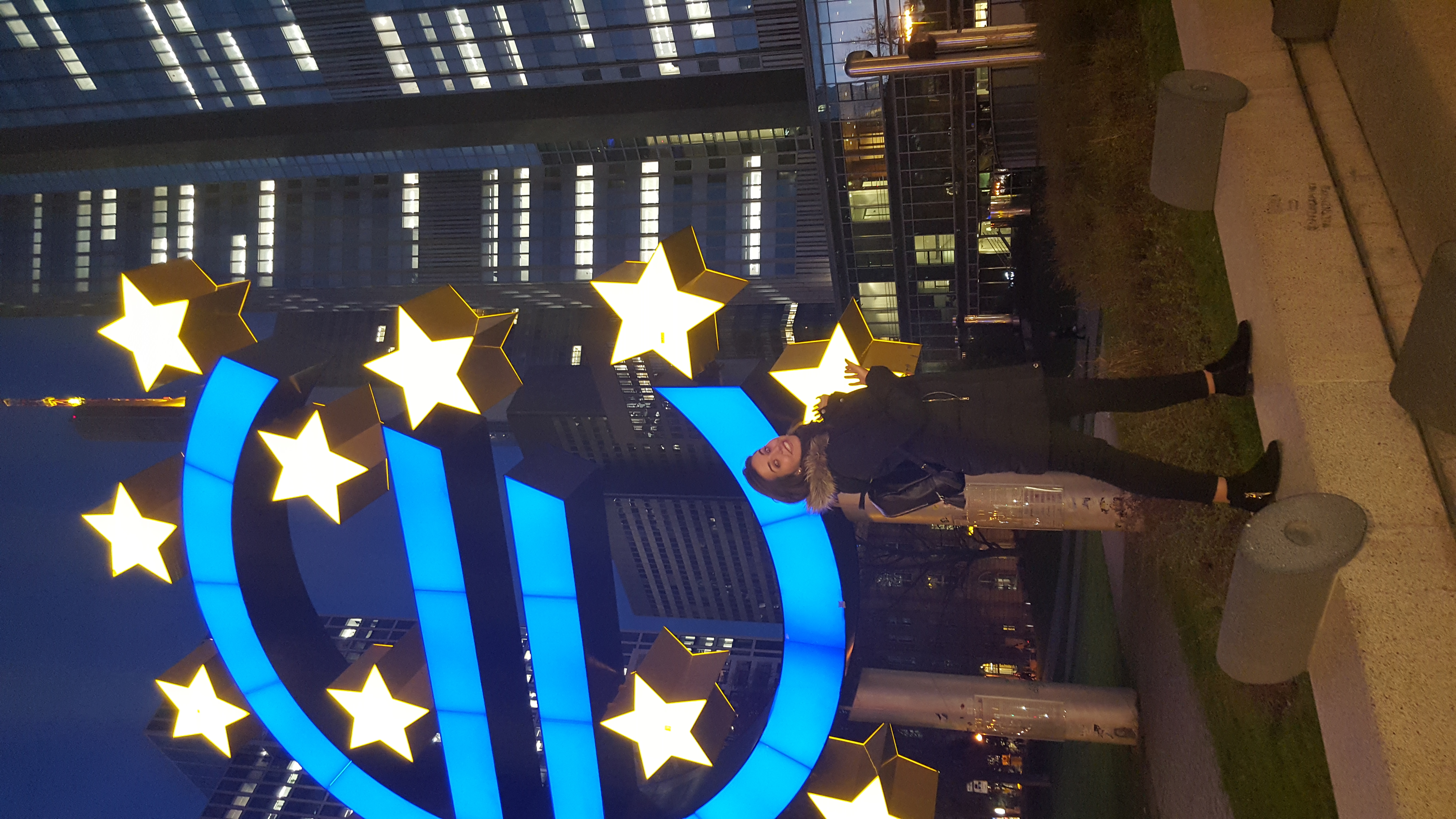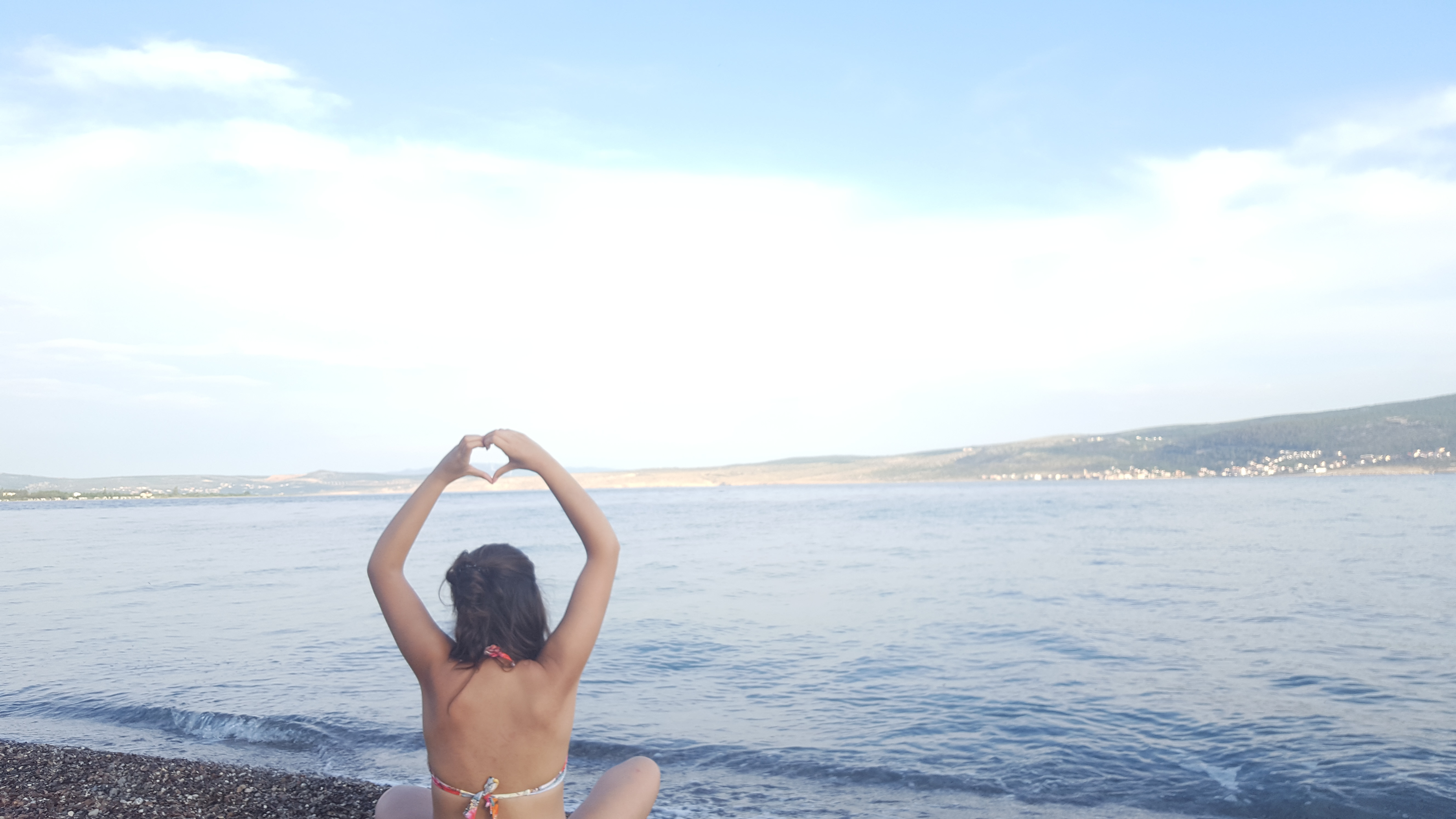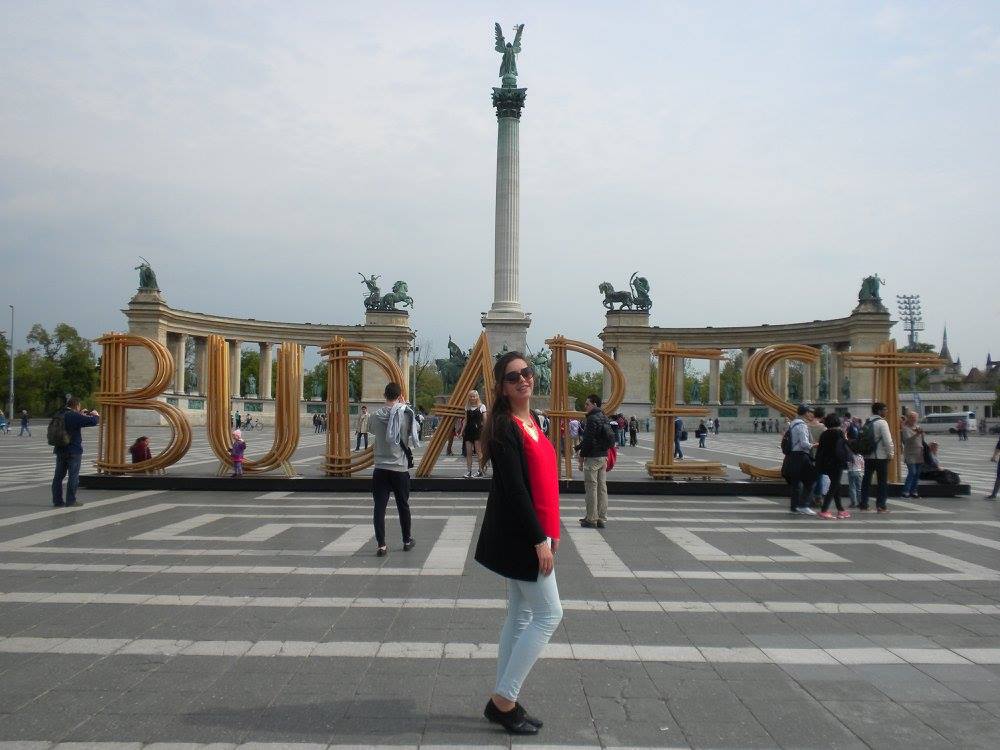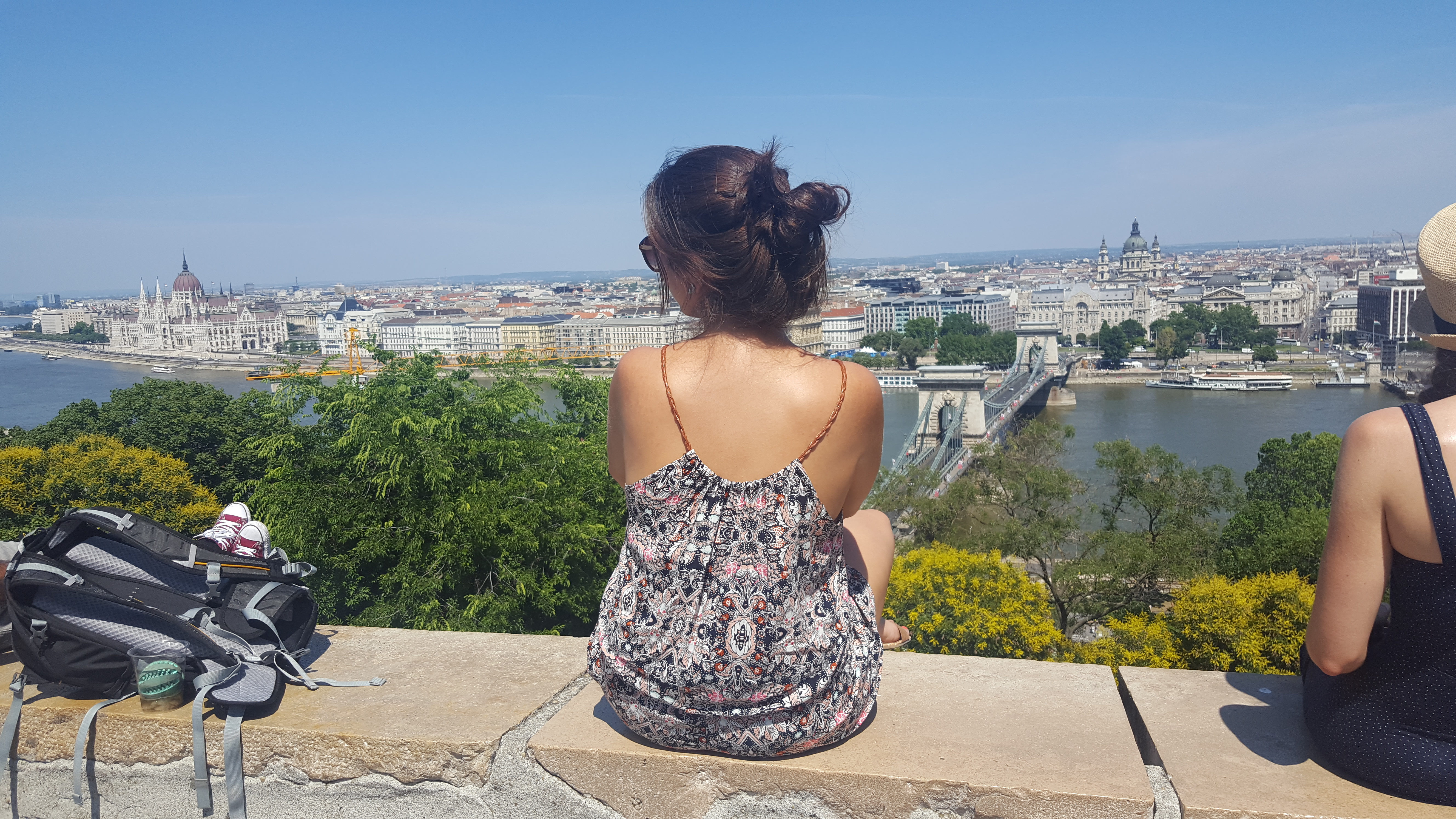The Humans of the Wyss (HOW) series features members of the Wyss community discussing their work, the influences that shape them as scientists, and their collaborations at the Wyss Institute and beyond.
Ana Raquel Santa Maria likes to use the analogy that the brain is like a castle, a fantastic and important place that’s being protected by several safeguards, one of which is the blood-brain barrier (BBB). But fairy tale comparisons end there: Ana Raquel is no damsel in distress. Instead, she is part of the Wyss Institute’s Brain Targeting Program that’s working to find a protein that can break through the castle’s defenses and deliver drugs for brain diseases where they’re needed. Learn more about Ana Raquel and her work in this month’s Humans of the Wyss.
What are you working on?

I’m working on the Brain Targeting Program (BTP). I like to say that the brain is like a castle or a fortress. It’s complex and amazing, but it must be protected. So, there are several safeguards protecting the castle. One of those is the “moat” or the blood-brain barrier (BBB). It’s responsible for keeping the brain, or the castle, safe from invaders that are trying to enter, like viruses and bacteria. That’s great, but the problem is that the BBB doesn’t discern between “good” and “bad” molecules. So, it’s very difficult for medicines to enter the brain. When you hear that there’s no cure for Alzheimer’s disease, Parkinson’s disease, or other brain diseases, one significant obstacle to development of better therapies is that the BBB is stopping therapeutics from entering the brain.
With the BTP, we’re trying to find a protein on the surface of the brain endothelial cells, which make up the BBB, that has the capacity to pick up a molecule from the blood and transport it into the brain – essentially, finding a guard who can identify a “good” visitor and safely accompany it across the moat to allow it into the castle.
What’s unique about the BTP is that we focus on using human data. This data can be difficult to get, but it’s so useful. We’re looking at how the expression of a protein in the brain capillaries compares to its expression in the capillaries of all the other organs in the human body. This will help us see which proteins are uniquely expressed in the brain endothelial cells and could allow us to get through the BBB. We’re hoping to have a target, or a protein, that can perform the transport capability soon.
What real-world problem does this solve?
Most brain or neurodegenerative diseases don’t have a cure. There are some ways to decrease symptoms, but no treatments that have a significant effect on the underlying cause. One major reason for that is that less than 1% of a brain directed therapy actually reaches the brain, because it gets blocked by the BBB and absorbed by other organs. By discovering a way to transport molecules more efficiently and selectively across the BBB, we can pave the way for more effective therapeutics for these diseases.
What inspired you to get into this field?
Since I was a kid, I always liked science. When I was young, my granny was diagnosed with osteoporosis. When I visited her in the hospital, I started to feel like I wanted to take care of people and make their lives better. As I grew up, I first thought about combining those interests by being a nurse, but then I discovered the idea of being a research scientist. I realized scientists are important to society. Though we don’t directly treat patients, we are helping people by moving the world towards new treatments. When it came time to decide what career to choose, I wanted to do something where I could change the world somehow, and science can do just that.
When it came time to decide what career to choose, I wanted to do something where I could change the world somehow, and science can do just that.
What continues to motivate you?
I feel that what we do is very important, because we can change at least one person’s life. The ability to have impact and improve lives is motivating.
I’m also driven by the students I work with. They have this enthusiasm for learning, which motivates me to know more about the field, and learn more about the field. I want to continue to motivate the younger generations to be scientists and love science. That’s so inspirational!
What excites you the most about your work?
I’ve always been fascinated by the brain. There are so many untreated diseases, so much more to understand. Scientists are always working with unknowns, and the fact that we have the chance to discover the unknown is very exciting.
Scientists are always working with unknowns, and the fact that we have the chance to discover the unknown is very exciting.
What are some of the challenges that you face?
Within my work, the biggest challenge is getting the human data. You cannot get new data every day, though we have great collaborating institutions that are helping us to get data. Outside of my specific project, my biggest challenge is figuring out how to explain the importance of science to non-scientists.
Why did you want to work at the Wyss?

I always wanted to do something that could change the world, or a little piece of it. I knew that a lot of the technologies developed at the Wyss don’t stay at the bench, and that appealed to me. There is a lot of cutting-edge technology development going on here, and a lot of startups spinning out. That’s what really fascinated me and motivated me to apply for a position at the Wyss when I finished my Ph.D., and I don’t regret it at all. It’s been an amazing experience so far.
What is unique about the Wyss and how has that impacted your work?
The community. We are a diverse community, not only in terms of culture, because we come from all around the world, but also in terms of our fields of expertise. If I face a problem in an area that I don’t really understand, I can go to someone who knows more than I do, and they will guide me with what to do or where to search for answers. We help each other.
We are a diverse community, not only in terms of culture, because we come from all around the world, but also in terms of our fields of expertise. If I face a problem in an area that I don’t really understand, I can go to someone who knows more than I do, and they will guide me with what to do or where to search for answers.
I’ll give an example of a time this impacted my work. I was doing a big experiment where I had to do flow cytometry. I knew the theory behind the technique and understood it conceptually, but I had never put it into practice before. We have someone here who is responsible for that. They guided me and stayed with me while I performed the experiment to help me succeed. That’s so important, and it was amazing because I was able to effectively use a method I hadn’t tried before.
How have your previous work and personal experiences shaped your approach to your work at the Wyss?

I have an international background in terms of my scientific work. I am from Portugal, but I did part of my master’s degree at the University of Groningen in the Netherlands. Then I won a Marie Sklodowska-Curie Fellowship as part of the ITN BtRAIN and went to Szeged, Hungary to do my Ph.D. There, I had the opportunity to work with incredibly intelligent scientists. During my Ph.D. studies, I had the chance to connect with many experts in the field of BBB research. I traveled all over Europe, attending a lot of conferences. I even worked in Japan for a month. This experience gave me the knowledge and background information that helps me to succeed at the Wyss.
On a personal level, I also believe the way you face the world impacts how you work and take on new challenges. Being abroad for so long and having all these international experiences taught me how to get out of my comfort zone and discover something new. That’s also what drives me to succeed at the Wyss.
When you’re not in the lab, and you’re not social distancing, how do you like to spend your time?
I spend a lot of time in the lab, but I believe that when you love what you do, you don’t work a day in your life, and that’s the case with me.
I love the beach – the sun, the sand, and the saltwater. That’s my favorite thing to do. As soon as it’s nice enough, I’ll be there. Portugal is a very sunny country – I got my bachelor’s and master’s degrees at Algarve University, which is right near the sea. We could study looking at the ocean. Even in the winter, I could just sit at the beach.

1/7 Miami Beach, 2021. She says that the feeling of sand in your feet the best! Credit: Ana Raquel Santa Maria 
2/7 Heroes Square, Budapest, Hungary, 2016. Credit: Ana Raquel Santa Maria 
3/7 Amsterdam, 2018. Credit: Ana Raquel Santa Maria 
4/7 Praia de Porto Covo, costa alentejana, Portugal, 2020. Ana is enjoying the sun and the beach with her husband, Viktor. Credit: Ana Raquel Santa Maria 
5/7 The Euro-Skulptur (German for Euro sculpture) by Ottmar Hörl set up at Willy-Brandt-Platz in Frankfurt am Main, Germany, 2017. Credit: Ana Raquel Santa Maria 
6/7 Trip to New York, 2021. Credit: Ana Raquel Santa Maria 
7/7 Enjoying the sun, friends, and a city view from Budapest, Hungary in 2017. Credit: Ana Raquel Santa Maria
I like to travel a lot, though unfortunately COVID-19 has restricted me, but I’m looking forward to exploring the United States more in the spring and summer. I also read books about non-science topics and just enjoy life with my friends and family.
What’s something unique or fun about you that someone wouldn’t know from your resume?

Right: Rocky in the his bag ready to travel. When he sees the bag is ready, he literally jumps in to start the journey. Credit: Ana Raquel Santa Maria
One is that I have a big family. Technically I only have one brother, but my mom has two brothers and one sister, and each of them has two kids, there are eight cousins in total. We all grew up together, and I like to say I have seven brothers and sisters. I’m the oldest and the youngest is thirteen. When we’re together, if we’re quiet, it means we’re up to no good. Since I’ve been abroad for so long, when I’m back in Portugal, they all stop their lives so we can be together. I speak with them almost every day on our group chat.
A second thing is that I have a little Yorkshire terrier that I’ve had since I lived in Portugal. His name is Rocky Balboa and he’s been around the world with me, including here in the United States. My mom likes to joke that the dog is more well-traveled than her. Like me, he loves to travel – whenever he sees his little dog carrier come out, he gets excited. Sometimes it seems he’s even more prepared to travel than I am.
If you had to choose an entirely different career path, what would it be?
I would be a nurse, but I’d want to be the type of nurse that goes to emergency situations. I’d want to be in the field, helping people at the front lines of natural disasters or human conflicts.
Also, maybe this isn’t entirely different, but I think science communication is so important, and it fascinates me. During my Ph.D. I participated in a competition called FameLab, where you have to explain your science in a creative way that non-scientists can understand in three minutes, using only simple props. I was one of the finalists in Hungary at that time. That was a great experience.
What does it feel like to be working on cutting-edge technology that has the potential to have a real and significant impact on people’s lives and society?
Wonderful, it feels wonderful. The Brain Targeting Program itself is amazing and innovative, but generally the Wyss is a cutting-edge institution. It’s an incredible place to be part of; seeing new discoveries developing every day and the rate at which technologies spin out and knowing that we as an institute are impacting the world makes me so proud. I’m so passionate about what I do, and I feel that from everyone here. We all believe strongly in our work and it’s wonderful to be aiming towards impact.
I’m so passionate about what I do, and I feel that from everyone here. We all believe strongly in our work and it’s wonderful to be aiming towards impact.



